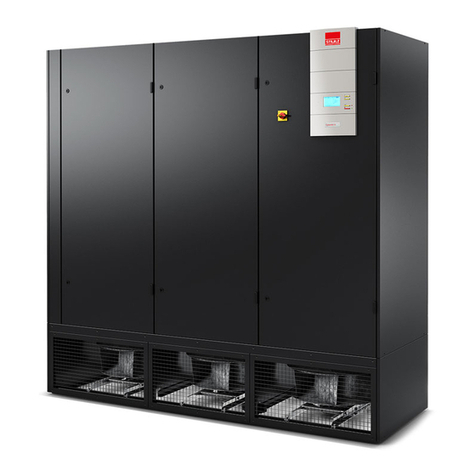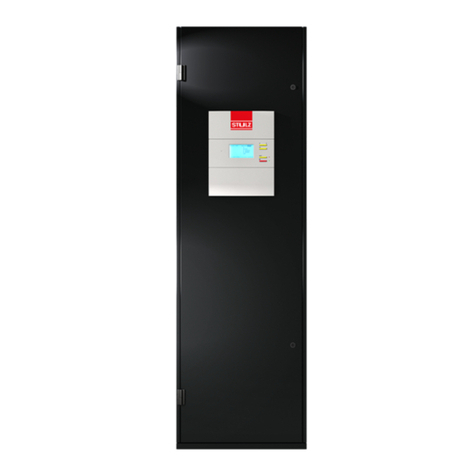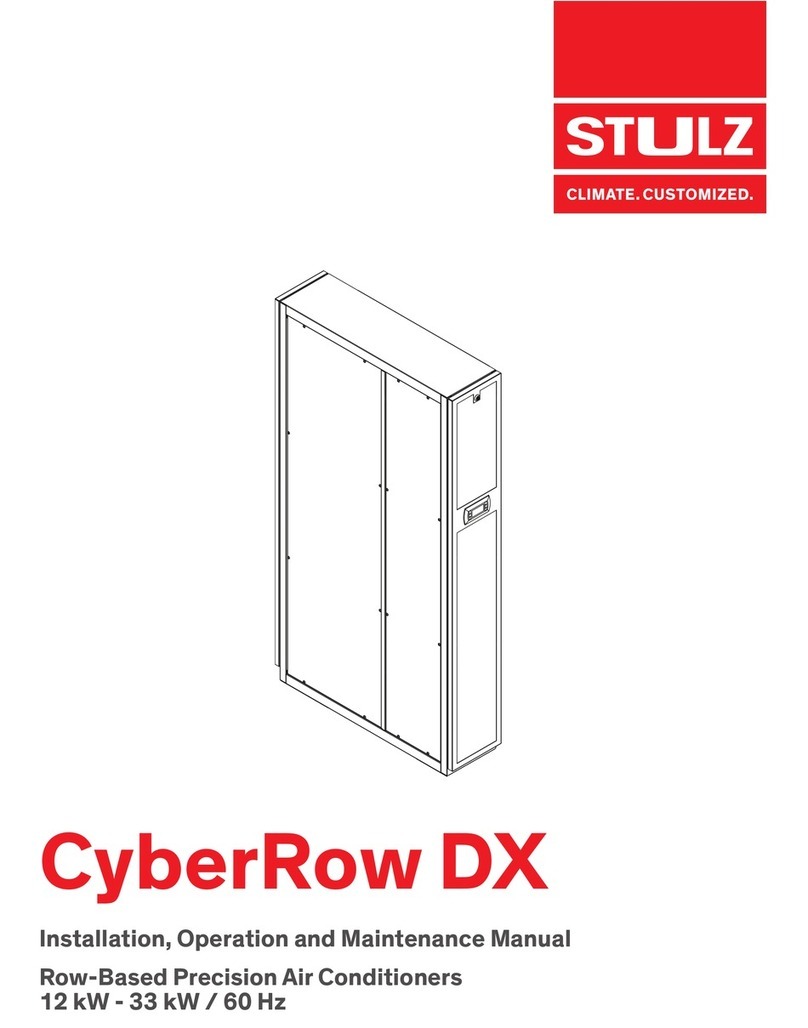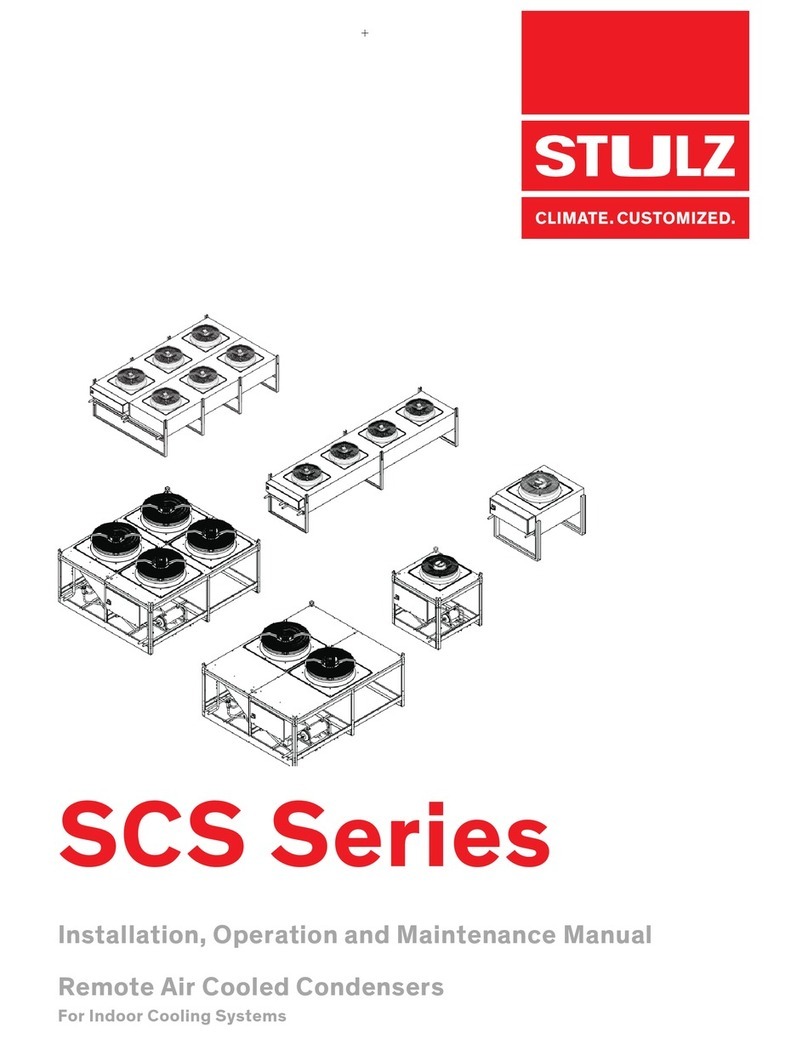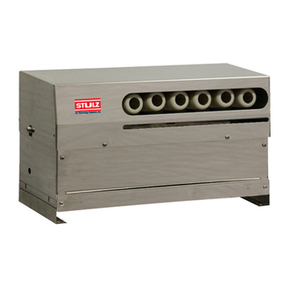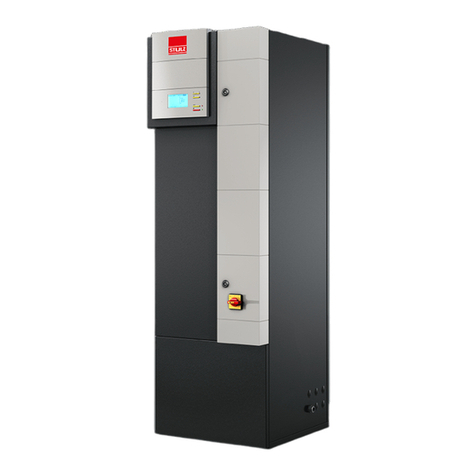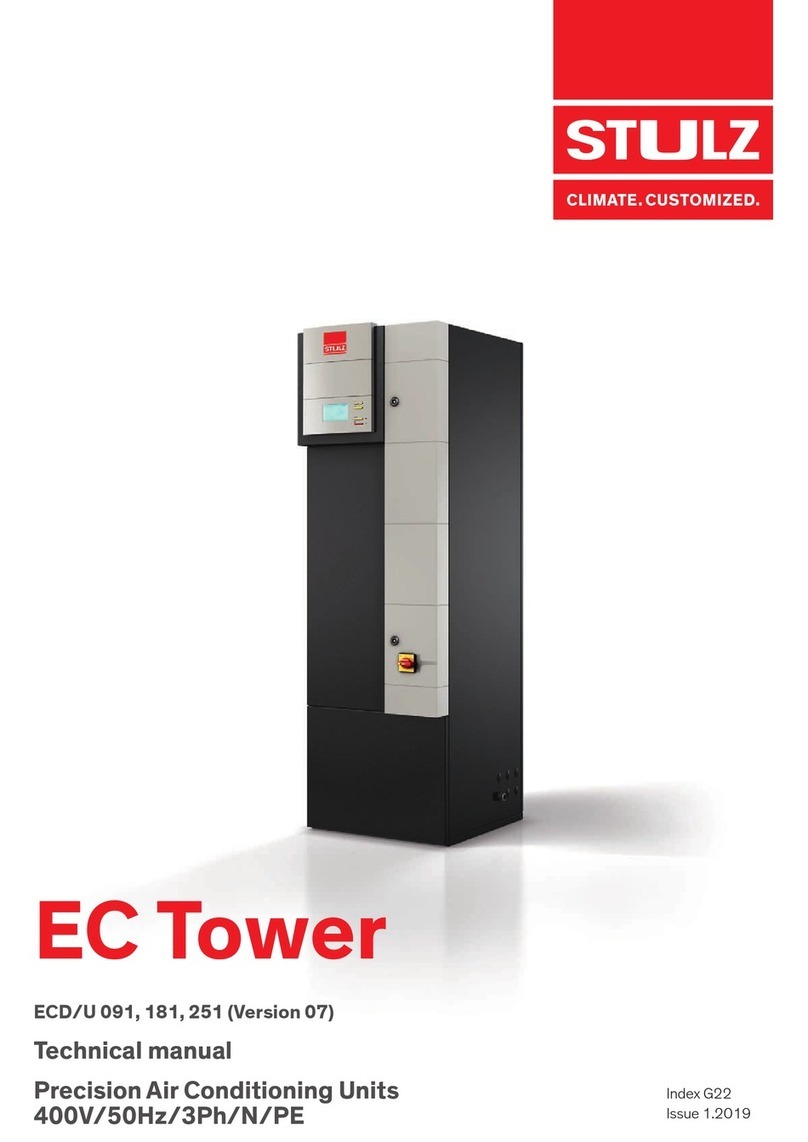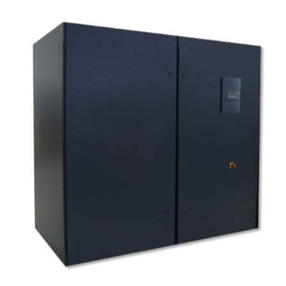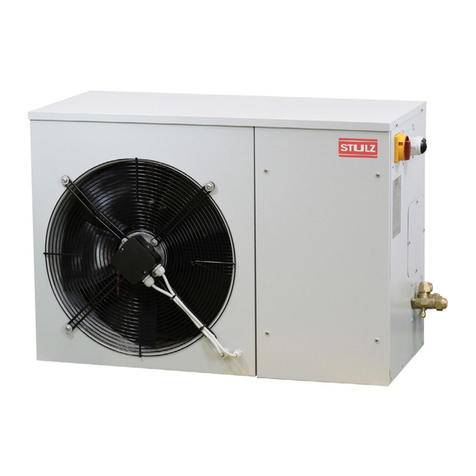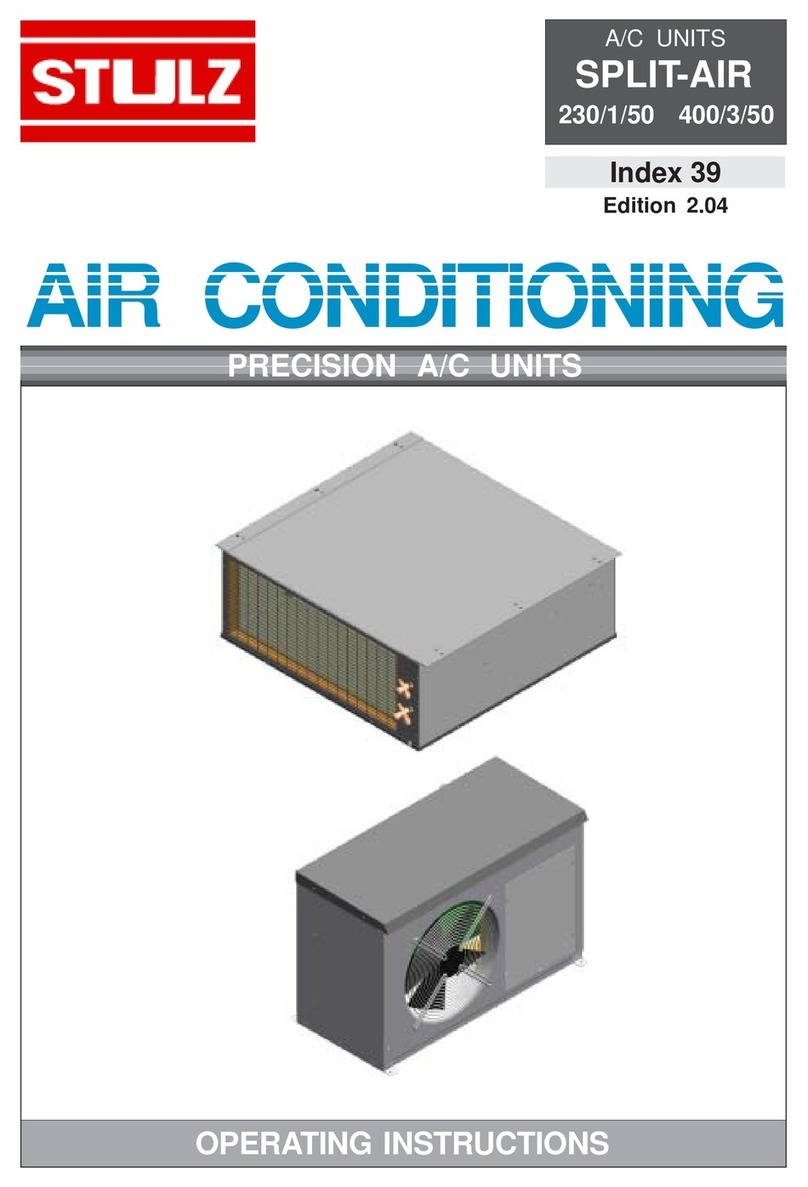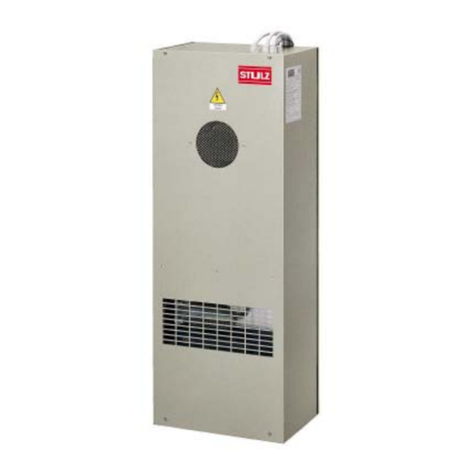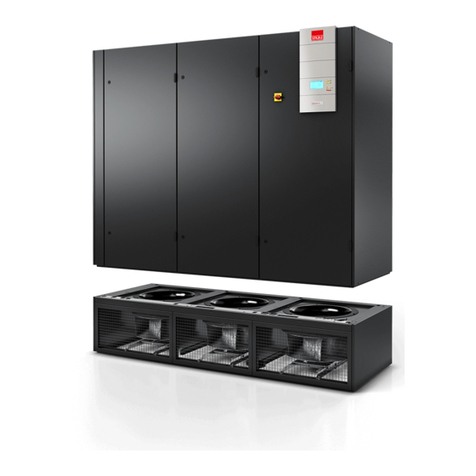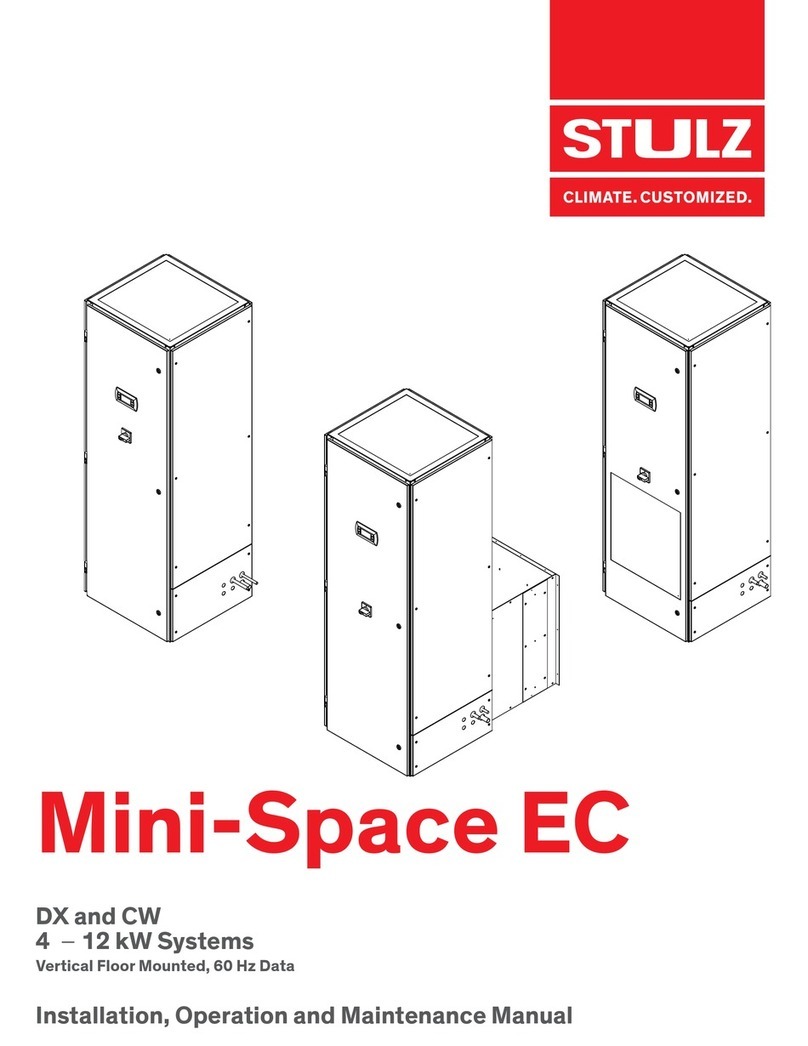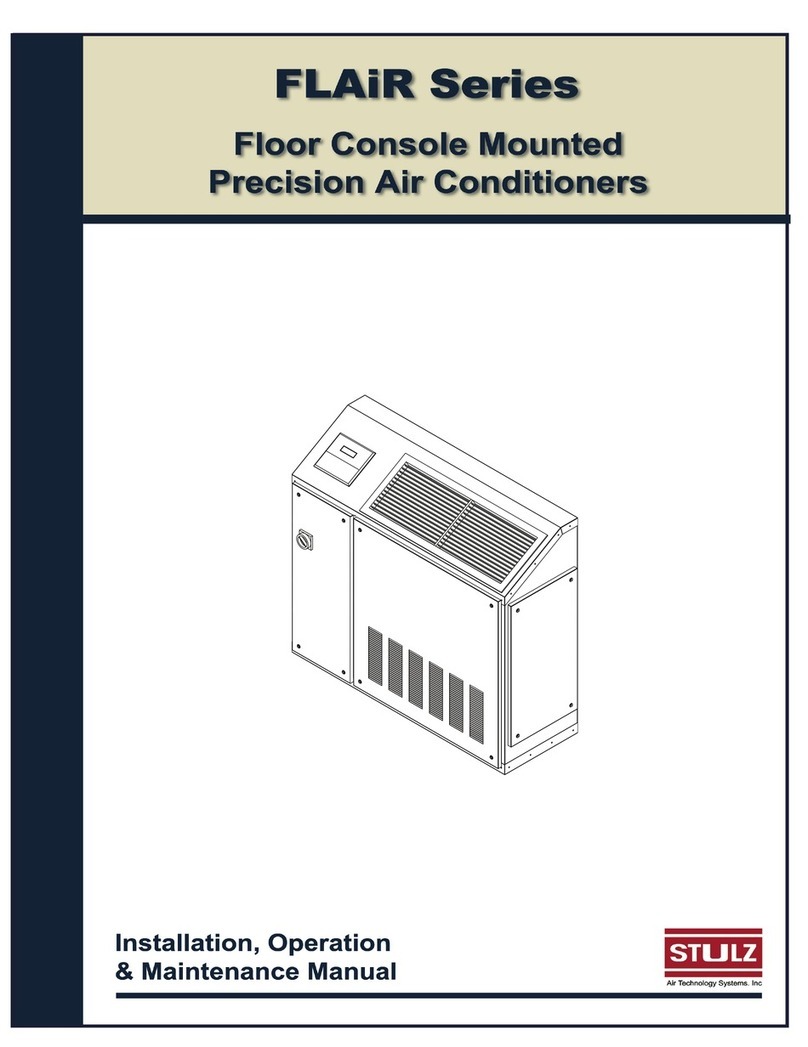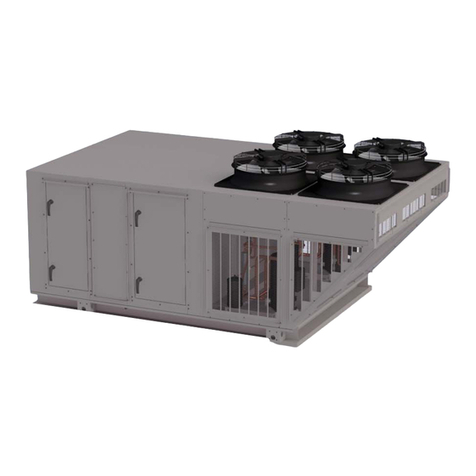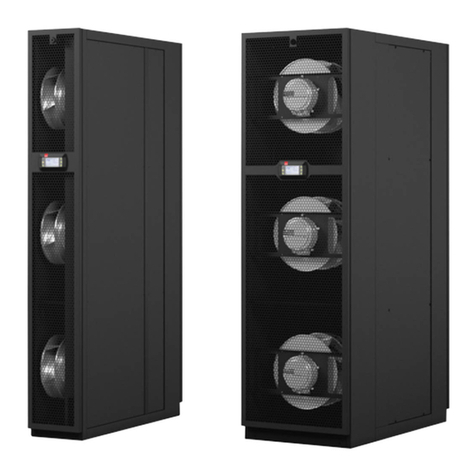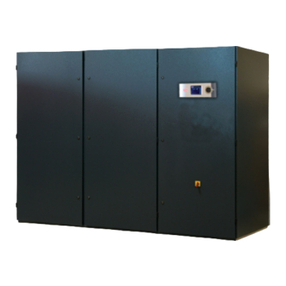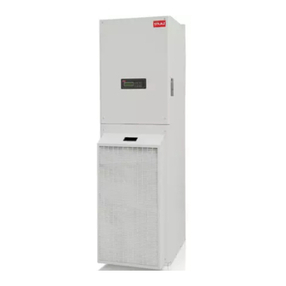
iv
CEILAIR OHS SERIES INSTALLATION, OPERATION AND MAINTENANCE MANUAL
2.8.1 Water/Glycol Systems...............................................25
2.8.1.1 Pump ...............................................................................25
2.8.2 DX Unit Charging Requirements............................25
2.8.3 Remote Air-Cooled Systems (AR/AHU)..............26
2.8.4 R407C/R410A Refrigerant ..................................26
2.8.5 Estimating Refrigerant Charge...............................26
2.8.6 Preparing System For Charging.............................27
2.8.6.1 Evacuate the System..................................................27
2.8.7 Refrigerant Charging Procedures .........................28
2.8.7.1 Initial System Charge .................................................28
2.8.7.2 Fine Tuning The System Charge.............................28
2.8.7.3 0 ºF Fan Cycling and -20 ºF Variable Speed
Control.............................................................................29
2.9 Refrigerant Characteristics......................................30
2.9.1 Pressure/Temperature Settings............................30
2.9.2 Saturated Refrigerant Pressure Tables...............30
2.10 System Settings and Adjustments ........................31
2.10.1 Low/High Pressure Limit Switch ..........................31
2.10.2 Head Pressure Controls—Air Cooled
Systems ..........................................................................31
2.10.2.1 Condenser Fan Cycling (Condenser Model
SCSAA, 0 °F)...............................................................31
2.10.2.2 Condenser Multi-Speed Fan Switch (Model
HESCAA , 0 °F ) .........................................................31
2.10.2.3 Variable Condenser Fan Speed (Condenser
Model SCSSA, -20 °F).............................................31
2.10.2.4 Intelligent Control (Condenser Model SCSEC
Only, -20 °F)..................................................................31
2.10.2.5 Flooded Head Pressure Control (Condenser
Model SCSAA With Fan Cycling, -30 °F) ..........32
2.10.2.6 Flooded Head Pressure Control (Condenser
Model HESCAA , -30 °F) .......................................32
2.10.3 Head Pressure Controls—Water/Glycol Cooled
Systems ..........................................................................32
2.10.4 Humidifier Adjustment...............................................32
2.10.5 Blower Adjustment .....................................................33
2.10.5.1 Belt Drive Blower.........................................................33
2.10.5.2 EC Fan (Optional).........................................................33
2.10.6 Thermal Expansion Valve..........................................33
2.10.7 Hot Gas Reheat (Optional)........................................34
2.10.8 Hot Gas Bypass (Optional).......................................34
2.10.8.1 Snap Acting Hot Gas Bypass .................................34
2.10.8.2 Full Floating Hot Gas Bypass..................................34
3.0 Commissioning, Operation And Decommis-
sioning ........................................................ 35
3.1 Commissioning the Unit ............................................35
3.1.1 Commissioning Steps................................................35
3.2 Operating the Unit.......................................................36
3.2.1 Shutdown Procedure.................................................36
3.2.2 Start-up Procedure ....................................................36
3.3 Programming the Thermostat.................................36
3.3.1 ATech Controller.........................................................36
3.3.2 E² Controller..................................................................36
3.4 Decommissioning the Unit.......................................36
3.4.1 Recovering Refrigerant.............................................37
3.4.2 Labeling Decommissioned Equipment................37
4.0 Maintenance............................................... 37
4.1 Periodic General Maintenance ...............................37
4.1.1 A/C Unit..........................................................................38
4.1.1.1 Compressor...................................................................38
4.1.1.2 Heater..............................................................................38
4.1.1.3 Air Filters ........................................................................38
4.1.1.4 Blower.............................................................................38
4.1.1.5 Coils .................................................................................38
4.1.1.6 Drain Pan........................................................................38
4.1.1.7 Condensate Pump .....................................................39
4.1.1.8 Humidifier.......................................................................39
4.1.2 Condenser/Condensing Unit..................................39
4.2 Troubleshooting...........................................................40
4.3 Field Service..................................................................43
4.3.1 Leak Detection.............................................................43
4.3.2 Leak Repair...................................................................43
4.3.3 Refrigerant Piping.......................................................43
4.3.4 General Common Repairs/Component
Replacement.................................................................43
4.3.4.1 Compressor Failure ...................................................43
4.3.4.2 Standard Cleanout Procedure................................44
4.3.4.3 Burn-Out/Acidic Cleanup Procedure ..................44
4.3.4.4 Humidifier Cylinder Replacement..........................44
4.3.4.5 Air Filter Replacement...............................................45
5.0 Product Support ........................................ 45
5.1 Factory Authorized Start Up/Warranty
Inspection ......................................................................45
5.2 Technical Support .......................................................45
